The iconic shield of the Scottish Highlander, the Targe in conjunction with the basket-hilt sword are among the most celebrated symbols of Scottish resistance and nationalism. The targe has a long history in Scotland, and unlike most shields it was not discarded as firearms began to dominate battlefields. Instead the Scots used them in earnest, for the targe could not only block blade and bayonet, but it could deflect some musket bullets and stop grapeshot in its thick wooden frame. The targe doubled as a weapon, for many had a center boss spike making shield bashing potentially fatal. Many Scots concealed a dirk behind the shield to give a grim surprise for an unaware foe. In their 18th century conflicts with England, the Scots would adorn their targes with the red cloth and brass buttons of fallen English soldiers. After the climactic Scottish defeat at the Battle of Culloden, the English banned the targe in an attempt to weaken the Scots Gaelic culture.
This Targe is hand-crafted in Seattle by Douglas Shaffer. It is made from quality hardwood plywood and covered with full grain cowhide on the front. The hand-tooled, highly detailed leatherwork has been made in the form of the swirling scrollwork and interlaced knotwork that can be seen on original targes.
Named The Tippermuir this targe commemorates a fantastic 1644 battle in which a force of highlanders, equipped only with stones picked up from the moor, swept away a much larger and better equipped force of Covenenters. Inexperienced in battle, the Covenenters were set upon by the force of the howling Highland Charge – the wildly enthusiastic Scots beat the first ranks of their enemies with stones, and taking their weapons set upon their foes who soon routed in a all-out panic.
The boss of this targe is hand-hammered and the nail studs are set by hand. The backing is padded animal hide and fur. Thick leather straps are affixed for the arm and hand and an integrated holster holds a 7 spike. This spike can be screwed onto the central boss after removing its brass nut for an easy conversion to the fearsome spiked targe. Two straps with a ring are riveted into the backing so that the targe can be easily hung on a wall. The spike sheath is embossed with ”Dughlas Rinn Mi” – Scots Gaelic for ”Douglas Made Me”.




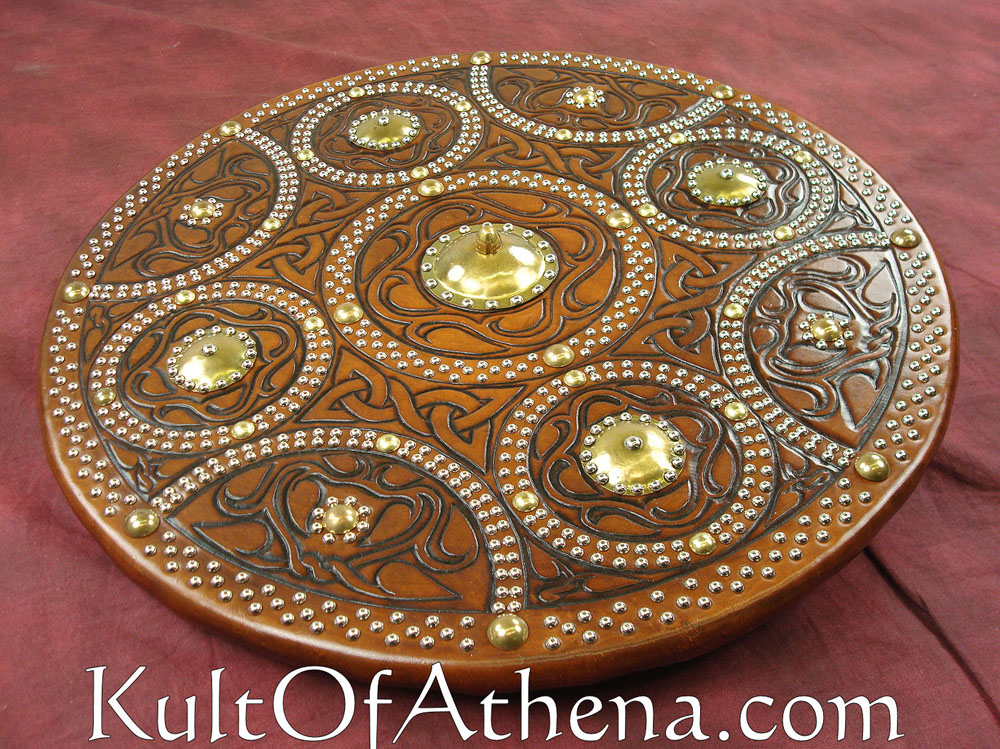


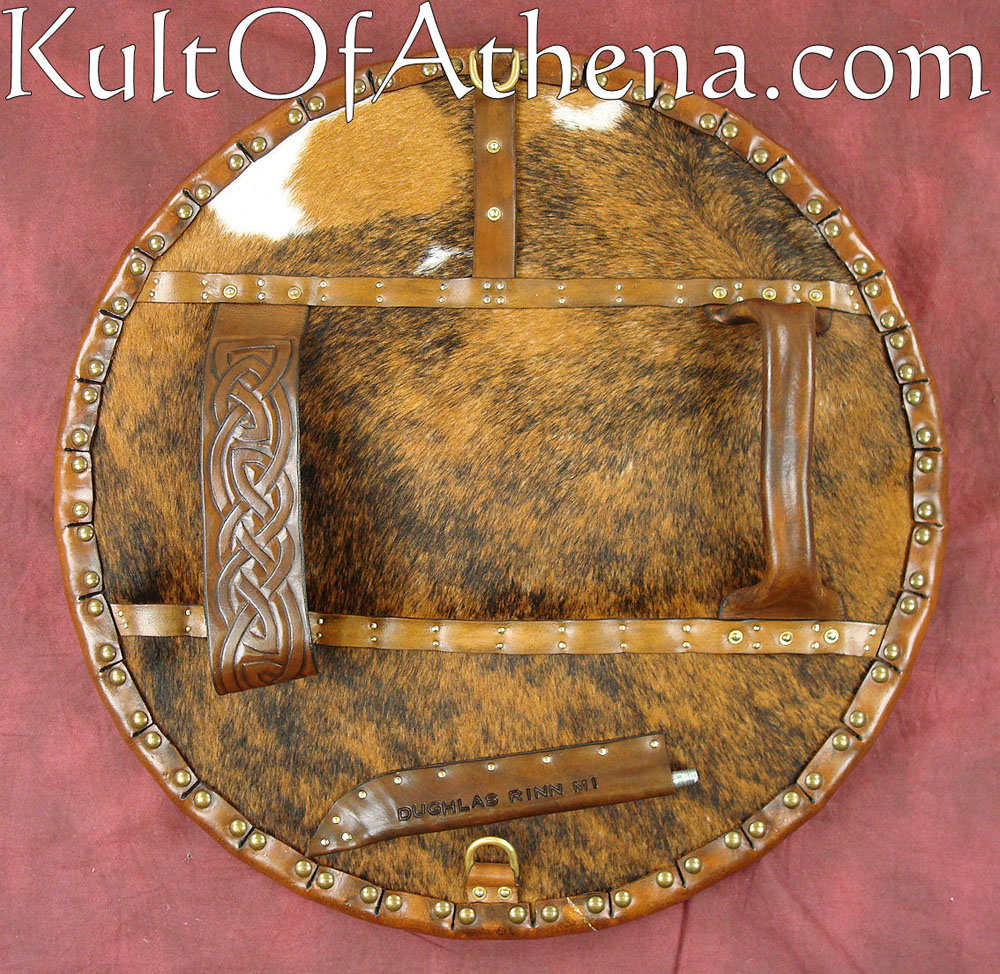


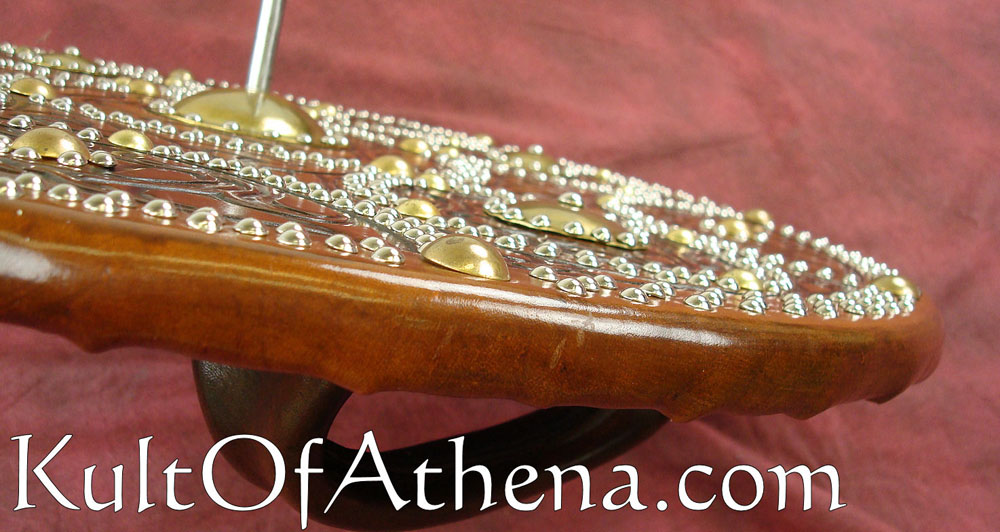



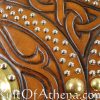
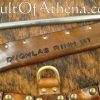




James Whitworth –
Simply Awesome Simply awesome, words I seldom use but they feel appropriate in this case. This targe is beautiful to say the least. I couldn’t be more happy with it. The leather work is detailed and superb. The studs are solid and evenly placed with no scuff marks or tarnishing. The central spike is also solid and should stand up to substantial abuse. Also, the sheath for the spike holds it in very firmly and I have no concerns that it might fall out, even with lots of use. On that note the image shows a signature “Dughlas Rinn Mi” which is not present on mine. I actually discovered this when I e-mailed Douglas himself. Who by the way couldn’t be more nice. He said he hasn’t done that in years.
The fur on the back is also a nice touch and there is padding under the area for the arm. Which creates a comfortable fit. Also, the two metal hanging loops are sturdy and can be used to attach a strap so it can be carried on the back or hung on a wall.
It’s, also worth noting that the layout of the back is close to what is depicted here but not exact. He has refined his style and layout since this image was taken. If you want up to date info or to see any of his other designs check out his website.
https://scottishtargesbydouglas.wordpress.com/
All in all this is the best piece in my collection. Even nicer than all my swords. Worth every penny.